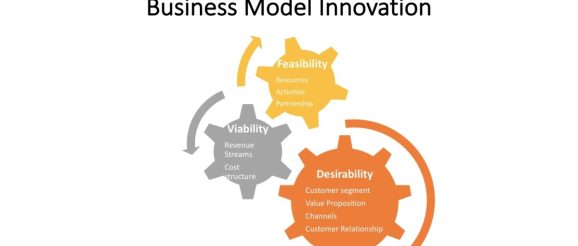What is the business model innovation, and how do you design it?

A business model is a strategy guiding you to create, deliver and capture innovative values. Innovators design a business model after they successfully test the idea and product in the market, and by this, the project is ready for the next level. In this article, I outline the business model, how to design it, and the factors influencing its significance.
What is the business model innovation?
The business model explains how a firm creates, delivers, and monetises (or captures) values. A group of customers decides values, which are benefits and features that a product or service carries. Business model innovation shows how organisations invent ways to create new values that customers want. Any business model typically involves three business elements: (1) value creation, (2) transaction, and (3) resources. Value creation relates to the desired benefits and features around products, and transactions are activities to create, deliver and capture values. Last, resources are physical and non-physical assets required to make the business model work.

How do you design a business model for innovation?
According to Osterwalder’s book ‘Business model generation’, a business model comprises nine business blocks (Osterwalder and Pigneur, Y., 2010 )1:
- Customer segments: define the different people or organisations an enterprise aims to reach and serve. To better satisfy customers, a company may group them into distinct segments with shared needs, behaviours, interests, or other attributes.
- Value propositions: describe the bundle of products and services that create value for a specific customer segment. They are benefits that a company offers customers. Value propositions can be quantitative (e.g., price, speed of service) or qualitative (e.g., design, customer experience). Value proposition attributes can be newness, value advantages, improved performance, customisation, attractive design, powerful brands, reduced costs, risk reduction, better convenience, easy usability, and so on.
- Channels: describe how a company communicates with and reaches its customer segments to deliver value propositions. The channels can be direct (e.g., sales forces, web sales, or own outlets) or indirect (e.g., partnership whole sales and retailers).
- Customer relationships: describe the relationships a company establishes with specific customer segments to discover, retain, and grow customers.
- Revenue streams: represent the sales, cash or proceeds a company generates from each customer. Every revenue stream may have different pricing mechanisms, such as fixed prices, bargaining, and auctioning. Revenues can be transactional, resulting from one-time customer payments, or recurring from ongoing deals. There are several ways to generate revenue streams, including asset sales, usage fees, subscription fees, renting, licensing, or advertising.
- Key resources: describe the assets required to make a business model work. Resources can be physical (e.g., assets), financial (e.g., money or funds, capital, loan or grants), intellectual (e.g., non-physical assets, IPO, copyright, logo, know-how, customer database), or human (e.g., skilful staff and management).
- Key activities: describe the most important things a company must do to make its business model work. They can be the production of values, supply chain management, acquiring resources, reaching markets, maintaining customer relationships, or earning revenue.
- Key partnerships: describe the network of suppliers and partners to make the business model work, reduce risk, or gain resources.
- Cost structure: describes all costs required to operate a business model. Cost structures comprise fixed costs (i.e., expenses that don’t change due to production levels) or variable costs ( i.e., expenses that change due to production levels).
Factors influencing the significance of business models
The significance of any business model is judged as per the following factors:
- Creativity: the degree a business model can invent ways to create, deliver and capture values.
- Desirability: the degree a business model can create new demand for the model’s products.
- Feasibility: the degree a business model can create the value propositions around the model’s products.
- Viability: the degree a business model can create a profitable and sustainable business.
- Scalability: the degree a business model can create a growing business.
- This post is sourced from my new book- Your Guide To Reach Innovation.
Final note: the book- Your Guide To Reach Innovation, is an actionable guide to innovation from beginning to end. Enjoy reading the book, and I look forward to your reviews.
Author: Munther Al Dawood
References:
- Osterwalder, A. and Pigneur, Y., 2010. Business model generation, John Wiley & Sons, New Jersey.
